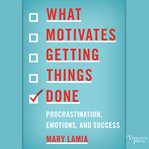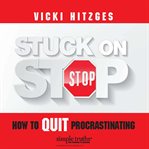Review by New York Times Review
THE DAILY EFFORT required to complete a major creative project is monumental - and frequently invisible. It's rare for novelists, artists, composers or computer programmers to pull back the curtain on the granular accumulation of alarm clocks set an hour back, day-job duties plugged through, sunny afternoons spent indoors, moments with family and friends unattended. Part of this is because it would be very boring. And yet we are fascinated by famous artists' and writers' daily routines: Benjamin Franklin and his naked "air baths," Patricia Highsmith's bacon and eggs for every meal, P.G. Wodehouse's calisthenics. So, it's not surprising that the Times business reporter and editor Phyllis Korkki's book, "The Big Thing" - which (in an expansion of a 2013 column that did the same thing) performs the trick of narrating her completion of the book she's writing - is both slow and fascinating. It's slow in the way hearing about someone finishing her book day after day after day in real life can be. And it's still fascinating, because Korkki is such a sympathetic subject, and her hodgepodge of a meta-book - part Malcolm Gladwell-lite behavioral psychology, part self-help writing guide - always manages to be charming. For Korkki, a Big Thing can be anything from a book to an app to a long trip : a major creative project undertaken for personal and internally motivated reasons. "For some of us," Korkki writes, "working on a Big Thing is one of the best ways to connect with the world." This sort of long-term, focused work instills a sense of purpose, connects us to future generations and trains a skill she calls "unitasking," as opposed to multitasking. But committing to a demanding personal project is also very difficult because we are perfectionists and fear failure, and it is much easier just to sit around and look at baby owl videos on the internet. With engaging energy and self-awareness, Korkki begins by calling in the experts to attack her own procrastination demons. She visits a breath specialist, a posture specialist, a nutritionist, a dream analyst, a doctor for anti-anxiety meds; she reorganizes her work space for maximum ergonomics; she spends an amount of time that will seem inordinate only if you've never worked from home trying to suss out whether it's O.K. to work in bed. She sets a daily routine to finish her book on time: Instead of having "my first cup of coffee in bed, usually while reading a Scandinavian mystery," she drinks it at her desk to start writing in the morning before her day job. Quickly, she falls off her routine and despairs of ever finishing - although fortunately, she is able to write about her despair and thus inch closer to her word-count goal. In the middle chapters of the book, themed around different ideas about creativity, Korkki interviews a number of people who have completed Big Things or are in the process, from Jim Levine, a Mayo Clinic doctor who writes novels and plays in his spare time, to struggling Ph.D. candidates to the Arctic expedition leader Ann Bancroft. Some interviews are more interesting than others, and they feel loosely stitched together with random threads of social-science research or Korkki's own observations; here, Korkki's meandering style becomes confusing, rather than disarming. Much more fun are the sections held up by Korkki's own anxieties, as when she hires a dairy farmer in Washington State to call her every morning and nag her to work, or when she decides - not altogether intuitively - that it's time to make her dating life part of her Big Thing. She calls back the posture expert for another consult and then goes on dates with, among others, a wild-haired man who "immediately began grilling me on my book and continued to question the premise of this chapter" - like Korkki's own private internet troll. Since we know even before opening the book that Korkki did in fact accomplish her Big Thing, the end is no surprise. But it is satisfying, after she has taken us on this generous and intimate tour of her shortcomings, to watch her finish. "Yes, I was often distracted, but always I returned to the Big Thing," she writes. Her success feels earned, and very encouraging. BRITT PETERSON is a contributing editor at Washingtonian magazine.
Copyright (c) The New York Times Company [September 14, 2016]
Review by Booklist Review
New York Times business editor Korkki draws on many interviews to produce her big thing, this book. Her thoroughly researched stories, intriguing interviews, and self-deprecating style create a fun, thought-provoking read. Want to know why you can't focus? Read Korkki's interview with a neuroscientist. Want to work with less fatigue? Learn how to belly breathe. Whether you learn more about posture, about the importance of letting your big thing sit for a day or even years, or become inspired by young people taking a trip and living through having an Uzi pointed at them, you'll want to keep reading. If you enjoy good journalism and want to create a big thing of your own, read this book. Readers who like Elizabeth Gilbert are sure to enjoy Korkki and, when they've finished this, may want to try Gilbert's Big Magic: Creative Living beyond Fear (2015) for another title that delves into the creative self-help realm.--McIntosh, Joyce Copyright 2016 Booklist
From Booklist, Copyright (c) American Library Association. Used with permission.
Review by Publisher's Weekly Review
Spurred by an impending deadline for a column, New York Times freelance editor and reporter Korkki turned her difficulty writing the piece into the subject of this book. In it, she asks why so many creative people stall out. Moreover, how do the ones who make it keep their drive? Korkki sets out to help people approach their long-term projects with an eye toward actually getting the work done. These projects can be traditionally creative (books, paintings) or organizational (start-ups, charities). In any case, making progress on them requires tuning out the distractions of everyday life, committing wholeheartedly, and doing what one loves out of love, not for wealth and fame. In order to get to work on one's "big thing" and keep working, she recommends breathing and relaxation, concentration even through illness, taking necessary breaks, managing day jobs while working, and maintaining relationships with loved ones. More of a meditation than a prescriptive lesson, this is a helpful if not particularly fresh guide to getting one's heart's project moving. (Aug.) © Copyright PWxyz, LLC. All rights reserved.
(c) Copyright PWxyz, LLC. All rights reserved
Review by Library Journal Review
To overcome procrastination, a writer pens a book about the subject, but does she ever finish it? Yes! This is not a text about creativity, per se. Instead it is about setting deadlines and devising smaller, manageable tasks and figuring out what stands in the way of one finally getting going on that "big project," whether it's writing a book, producing a work of art, starting up a company, or building an app. Part self-help, part memoir, the volume provides examples of a wide variety of people and their undertakings. Korkki, assignment editor for the New York Times Sunday Business section, looks at psychological factors that hold people back and provides practical methods for making plans a reality, often trying them out on herself first. She also considers those of us who do not have this deep-seated artistic urge. Well written, in a breezy confessional style, it is an intriguing work for people in either camp. VERDICT While reading this might prompt yet another means of procrastination, it can also give readers the tips and inspiration they need to get started (or restarted) on their own "big thing." Recommended for public libraries.-Susan Hurst, Miami Univ. Libs., Oxford, OH © Copyright 2016. Library Journals LLC, a wholly owned subsidiary of Media Source, Inc. No redistribution permitted.
(c) Copyright Library Journals LLC, a wholly owned subsidiary of Media Source, Inc. No redistribution permitted.


